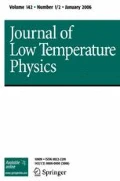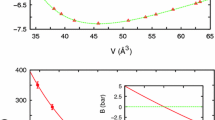Recent observations of the low-field-strength paramagnetic susceptibility of melting solid 3He indicate its Curie-Weiss-type behavior at temperatures T > 5 mK. These require an identical temperature behavior of the magnetic melting-pressure shift over the same temperature range. Melting-pressure-shift measurements should thus independently confirm the observed temperature behavior of the susceptibility and yield, in addition, the Curie constant of melting solid 3He. Using the theoretical value of this constant in the low- or moderate-field-strength melting-pressure-shift formula, the calculated shifts appear to be currently accessible to measurements with acceptable accuracy at T > 5 mK. The inverse problem of determination of the paramagnetic moment or magnetization of melting solid 3He from melting-pressure shifts may be solved on the basis of a differential magnetothermodynamic relation without significant limitations on the applied external magnetic field strength or on the temperature range. Helium-3 melting-pressure and temperature measurements in the presence of a constant and uniform magnetic field of known strength should enable, within the above formalism, the determination of the magnetic phase diagram of solid 3He at melting down to the lowest experimentally accessible temperatures. This approach may supplement other independent methods of magnetic phase-boundary-line determinations of solid 3He.
Similar content being viewed by others
References
L. Goldstein, Phys. Rev. 171, 194 (1968).
G. C. Straty and E. D. Adams, Phys. Rev. Lett. 17, 290, 505 (1966).
D. M. Bakalyar, C. V. Britton, E. D. Adams, and Y. C. Hwang, Phys. Lett. 64A, 208 (1977); see also
Y. Morii, K. Ichikawa, T. Hata, C. Kanamori, H. Okamoto, T. Kodama, and T. Shigi, in Physics at Ultralow Temperatures, T. Sugawara, ed. (Physical Society of Japan, Tokyo, 1978), p. 196.
L. Goldstein, J. Low Temp. Phys. 25, 541 (1976).
T. C. Prewitt and J. M. Goodkind, Phys. Rev. Lett. 39, 1283 (1977).
L. Goldstein, Phys. Rev. A 2, 1964 (1970).
E. R. Grilly, J. Low Temp. Phys. 4, 615 (1971).
W. P. Halperin, F. B. Rasmussen, C. N. Archie, and R. O. Richardson, J. Low Temp. Phys. 31, 617 (1978).
R. B. Kummer, R. M. Mueller, and E. D. Adams, J. Low Temp. Phys. 27, 319 (1977); E. D. Adams, in Physics at Ultralow Temperatures T. Sugawara, ed. (Physical Society of Japan, Tokyo, 1978), p. 162.
Author information
Authors and Affiliations
Additional information
Work done under the auspices of the U.S. Department of Energy.
Rights and permissions
About this article
Cite this article
Goldstein, L. Formal treatment of some low-temperature properties of melting solid helium-3. J Low Temp Phys 35, 299–312 (1979). https://doi.org/10.1007/BF00115581
Received:
Issue Date:
DOI: https://doi.org/10.1007/BF00115581




